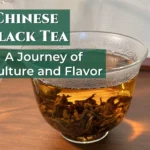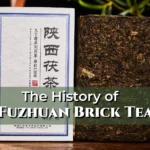A tea knife is an indispensable tool for tea enthusiasts, particularly those who enjoy compressed teas like Puerh or Fu tea. Whether you’re breaking apart a tea cake, slicing through a tea brick, or separating layers of pressed tea, having the right tea knife can make all the difference in your tea preparation experience. This comprehensive guide will explore various tea knife styles, their unique features, and how to choose the perfect one for your tea collection.
Understanding the Importance of a Quality Tea Knife
Before delving into specific tea knife styles, it’s crucial to understand why a dedicated tea knife is essential for any serious tea lover. Unlike regular kitchen knives, tea knives are designed to break apart compressed tea without damaging the leaves. This preservation of leaf integrity is vital for maintaining the tea’s flavor profile and ensuring an optimal brewing experience.
A well-crafted tea knife allows you to precisely control the amount of tea you’re separating, which is particularly important when dealing with aged or rare teas where every gram is precious. Moreover, using the appropriate tool shows respect for the tea and the artisanal process behind its creation, aligning with the mindful nature of tea culture.
Exploring Different Tea Knife Styles
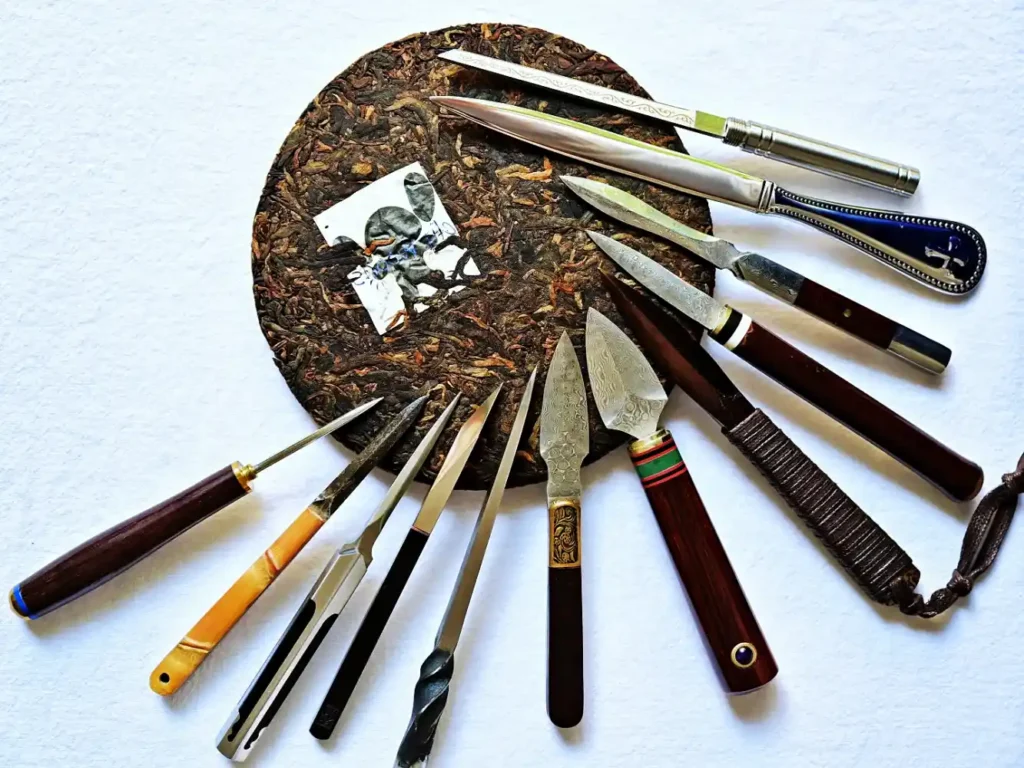
Tea knives come in various styles, each suited to different types of compressed tea and personal preferences. Let’s examine some of the most popular and effective tea knives for tea cake styles:
The Classic Puerh Knife
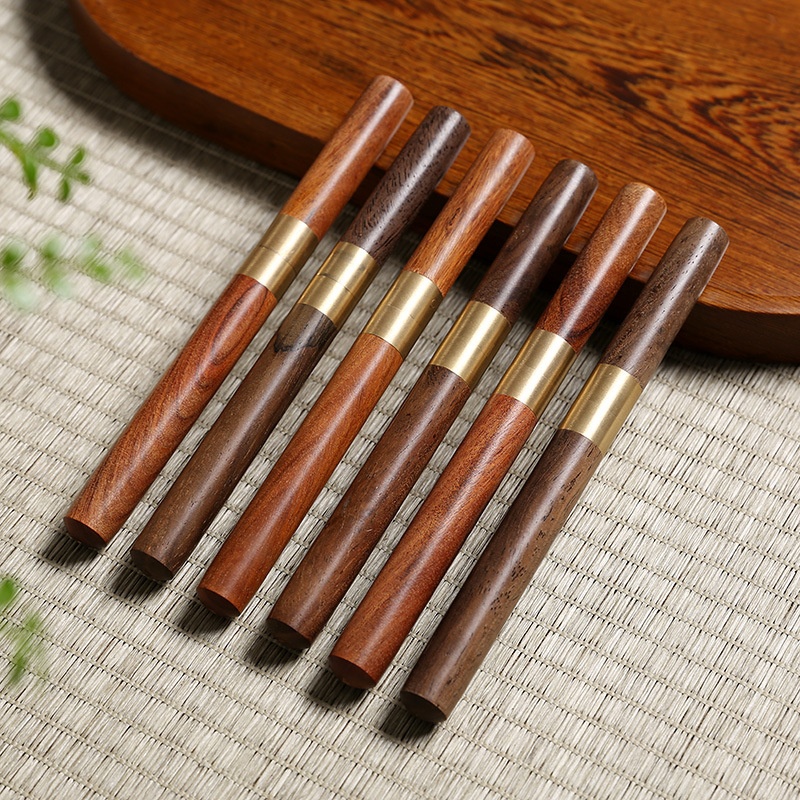
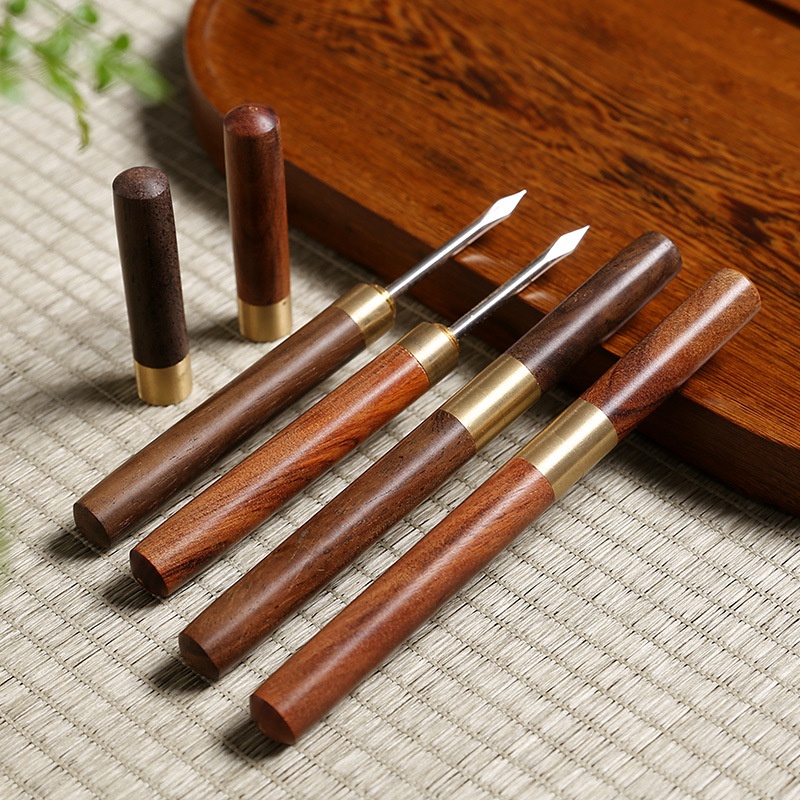
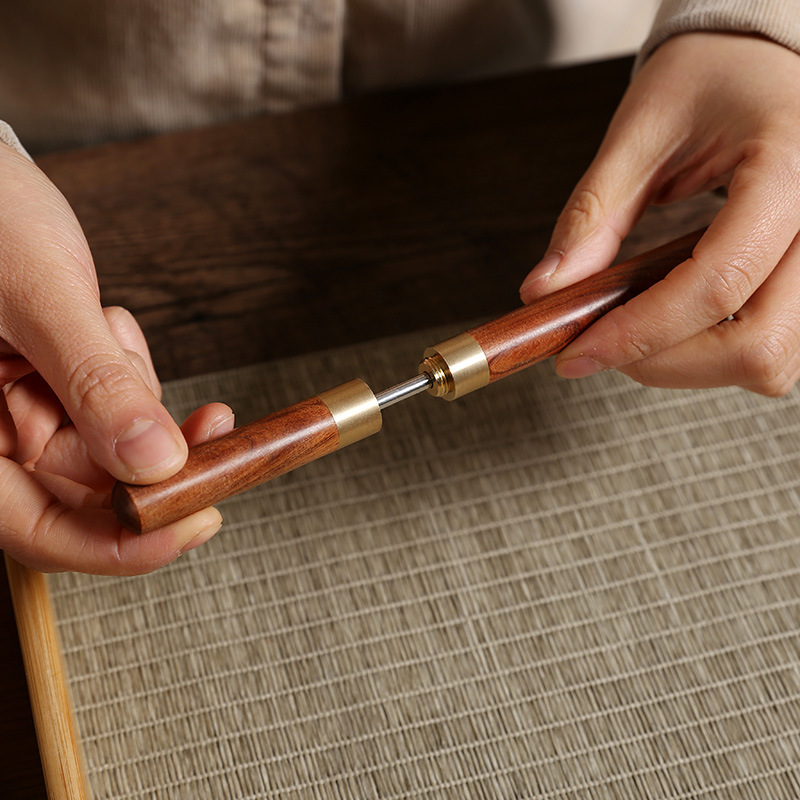
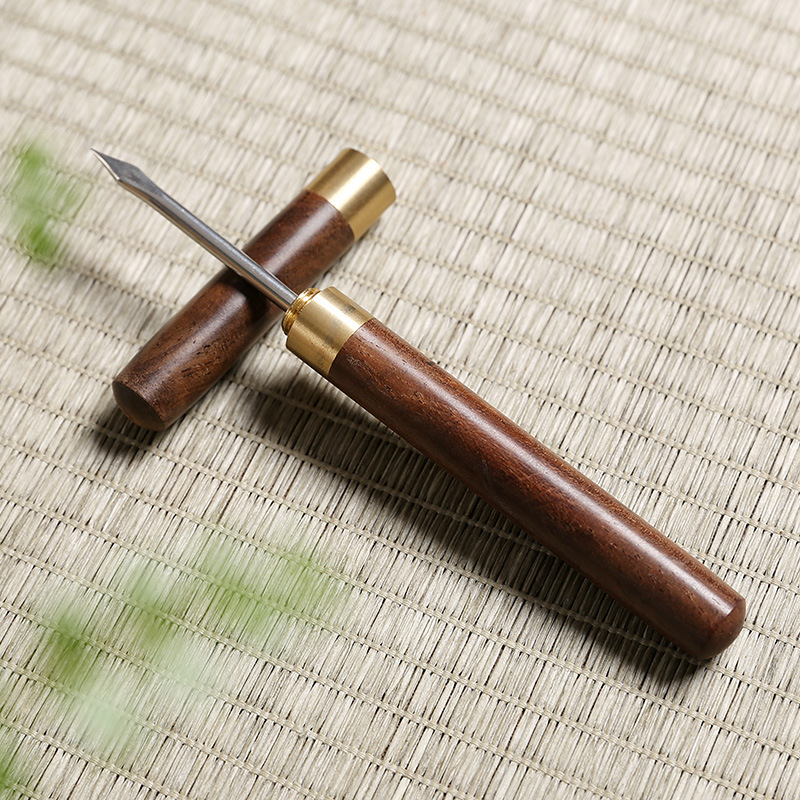
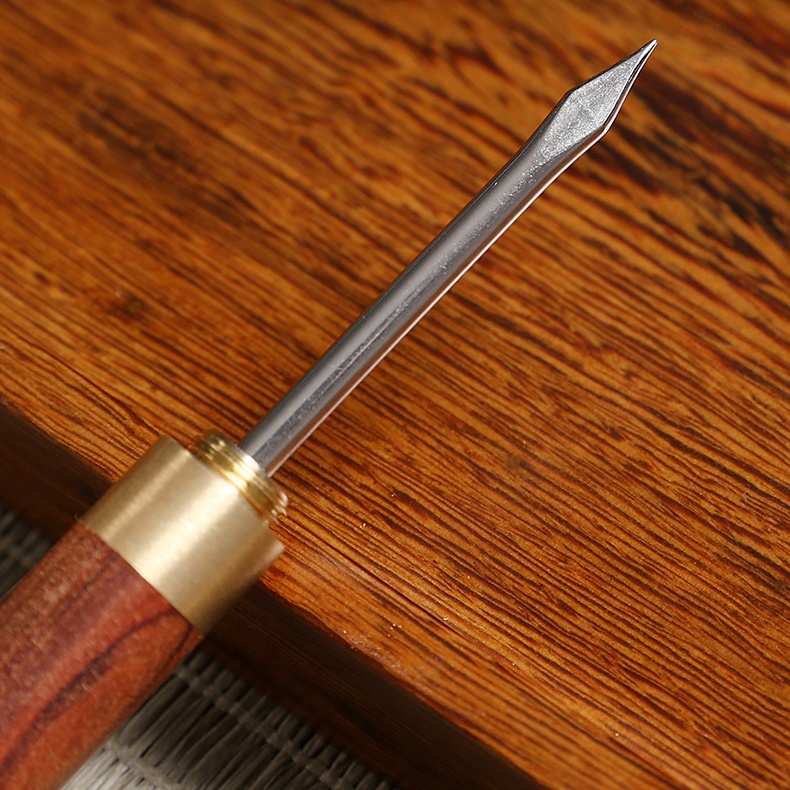
The classic Puerh knife, often called a “Pu-erh pick” or “tea needle,” is a staple for Puerh tea aficionados. This style typically features a long, slender blade with a sharp point designed to easily pierce and separate layers of tightly compressed tea cakes. The handle is usually wood or bamboo, providing a comfortable grip and a traditional aesthetic.
Key features of a classic Puerh knife include:
- A thin, tapered blade for precise control
- A sharp point for initial penetration of the tea cake
- A sturdy handle for leverage when working with dense cakes
The Versatile Tea Brick Knife
For those who frequently enjoy Fu tea or other brick-style compressed teas, using a tea knife to break tea brick is an excellent choice. These knives typically have a more expansive, flatter blade than the Puerh pick, allowing for more leverage when breaking dense tea bricks apart.
Characteristics of a quality tea brick knife include:
- A broad, sturdy blade capable of withstanding pressure
- A sharpened edge for clean cuts through compressed tea
- A comfortable handle designed for a firm grip and control
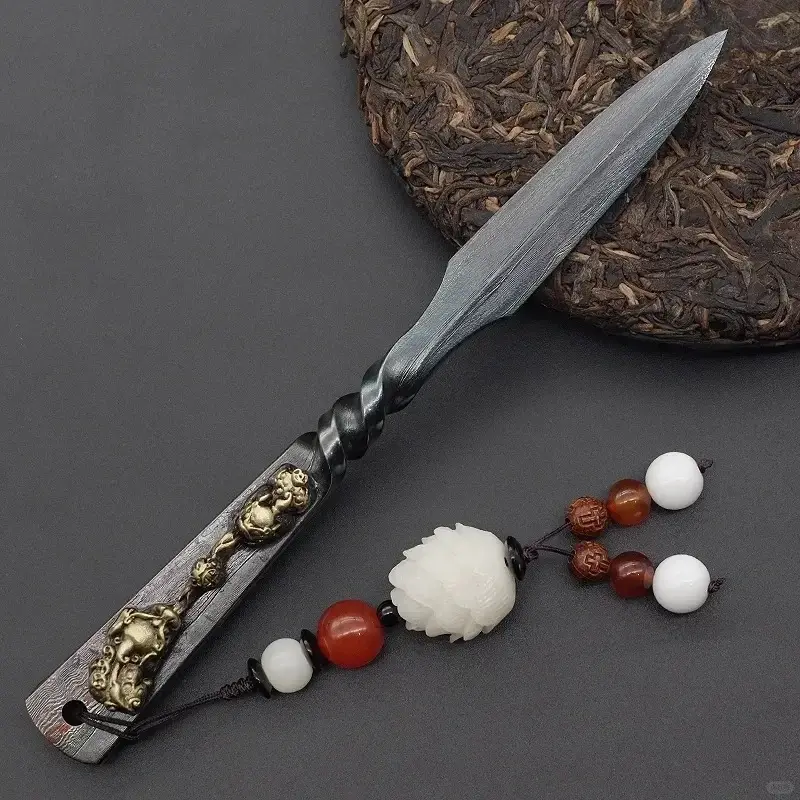
The Innovative Curved Tea Knife
The curved tea knife is a recent addition to the family. This style combines elements of traditional tea knives with a unique curved design that offers enhanced control and precision. The curved blade allows for a rocking motion when separating tea, which can be particularly effective for breaking pressed tea into consistent sizes.
Benefits of a curved tea knife include:
- Improved leverage for breaking stubborn tea cakes
- Enhanced control for precise portioning
- Versatility in handling various compressed tea formats
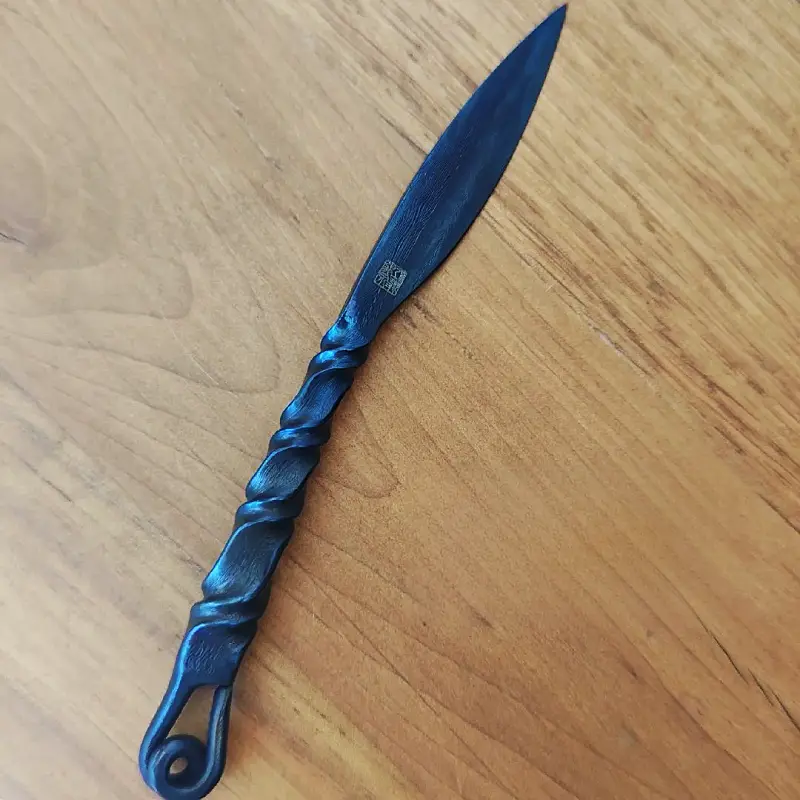
Choosing the Right Tea Knife for Your Collection
Selecting the perfect tea knife for breaking pressed tea depends on several factors, including the types of tea you typically enjoy, your preferences, and your experience with compressed teas. Here are some considerations to keep in mind when choosing a tea knife:
Tea Types and Formats
Consider the primary types of compressed tea in your collection. A classic Puerh knife might be your best bet if you mainly enjoy Puerh tea cakes. A versatile tea brick knife or curved tea knife could be more suitable for a diverse collection that includes bricks, cakes, and other pressed formats.
Material and Construction
Look for tea knives made from high-quality materials that will stand the test of time. Stainless steel blades are popular for their durability and resistance to corrosion. For handles, natural materials like wood or bamboo offer a traditional look and feel, while modern options might include ergonomic plastic or metal designs.
Comfort and Ease of Use
Consider how the knife feels in your hand. A comfortable grip is essential, especially if you frequently prepare compressed teas. The weight and balance of the knife should feel natural and allow for precise control.
Aesthetics and Cultural Significance
Tea tools’ visual appeal and cultural significance are essential for many enthusiasts. Some may prefer a tea knife that reflects traditional Chinese craftsmanship, while others might opt for a more modern, minimalist design. Choose a style that resonates with your taste and enhances your tea preparation ritual.
Versatility vs. Specialization
Decide whether you need a specialized tool for a specific type of tea or a more versatile knife that can handle various formats. A versatile option might be more practical if you’re new to compressed teas or have a diverse collection. Seasoned enthusiasts might prefer to have multiple specialized knives for different tea types.
Conclusion
In conclusion, the world of tea knives offers a fascinating array of options for tea lovers. Whether breaking apart a prized Puerh cake, slicing through a dense Fu tea brick, or carefully separating layers of pressed tea, having the right tea knife can elevate your tea preparation experience. By considering the unique features of different tea knife styles and matching them to your specific needs, you can find the perfect tool to enhance your tea journey.
At Orientaleaf, we understand the importance of proper tea preparation and quality tools’ role in bringing out the best in every cup. We invite you to explore our curated selection of teas from the Qinling Mountains and beyond and to discover the joy of preparing them with care and precision. Remember, the right tea knife is not just a tool – it’s a bridge between you and the rich traditions of tea culture.
We serve thousands of satisfied tea enthusiasts in our tea house each year, and we’re excited to share these exceptional teas with tea lovers worldwide at Orientaleaf.com.

References
- Heiss, M. L., & Heiss, R. J. (2007). The Story of Tea: A Cultural History and Drinking Guide. Ten Speed Press.
- Pettigrew, J. (2018). Tea Tools and Techniques: A Guide to the Art of Tea Preparation. Tea Enthusiast Press.
- Zhang, Q., et al. (2020). “Traditional Tea-Making Tools and Their Modern Applications in Tea Culture.” Journal of Tea Science and Technology, 36(4), 112-125.
- Xu, Y., & Wang, L. (2015). The Art of Chinese Tea: Tools, Techniques, and Rituals. Cambridge Tea Studies.
- Smith, R. (2019). “Selecting the Right Tools for Compressed Teas: A Guide for Tea Enthusiasts.” International Tea Journal, 22(3), 58-67.

